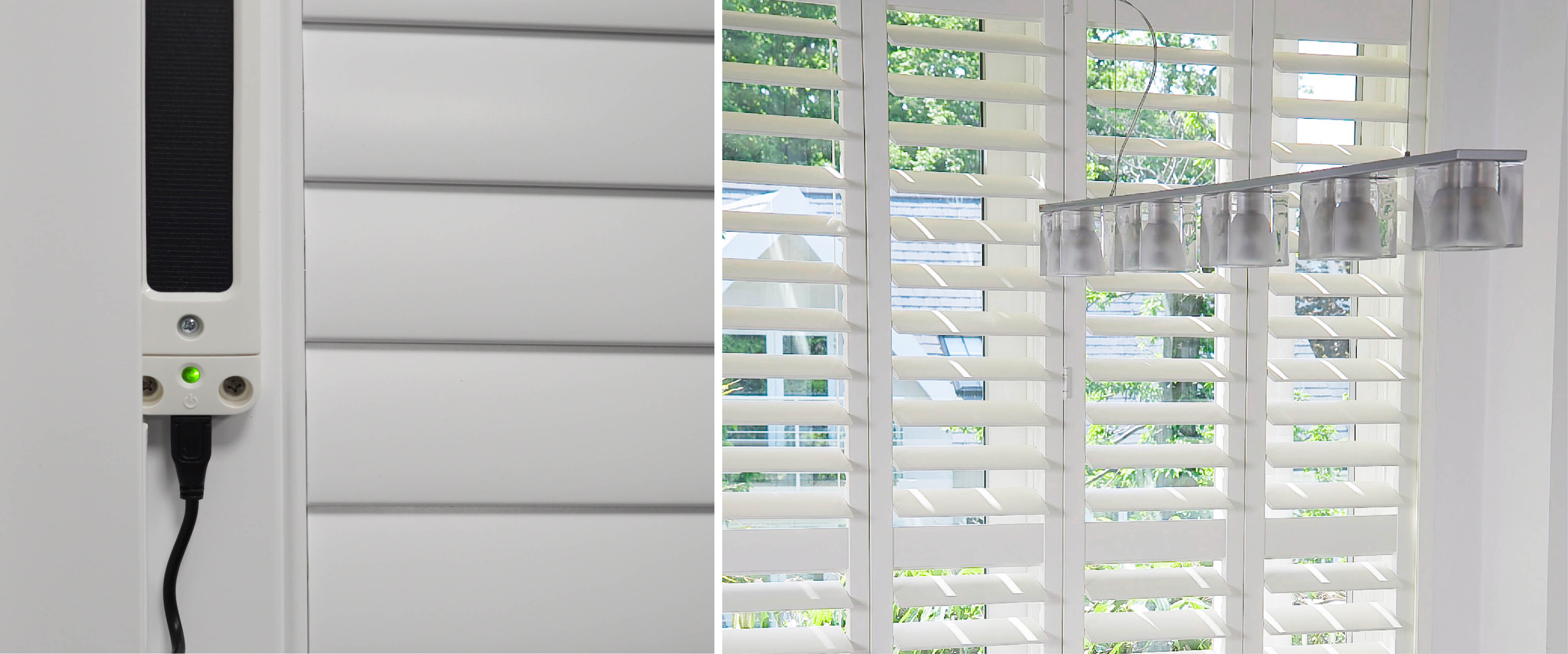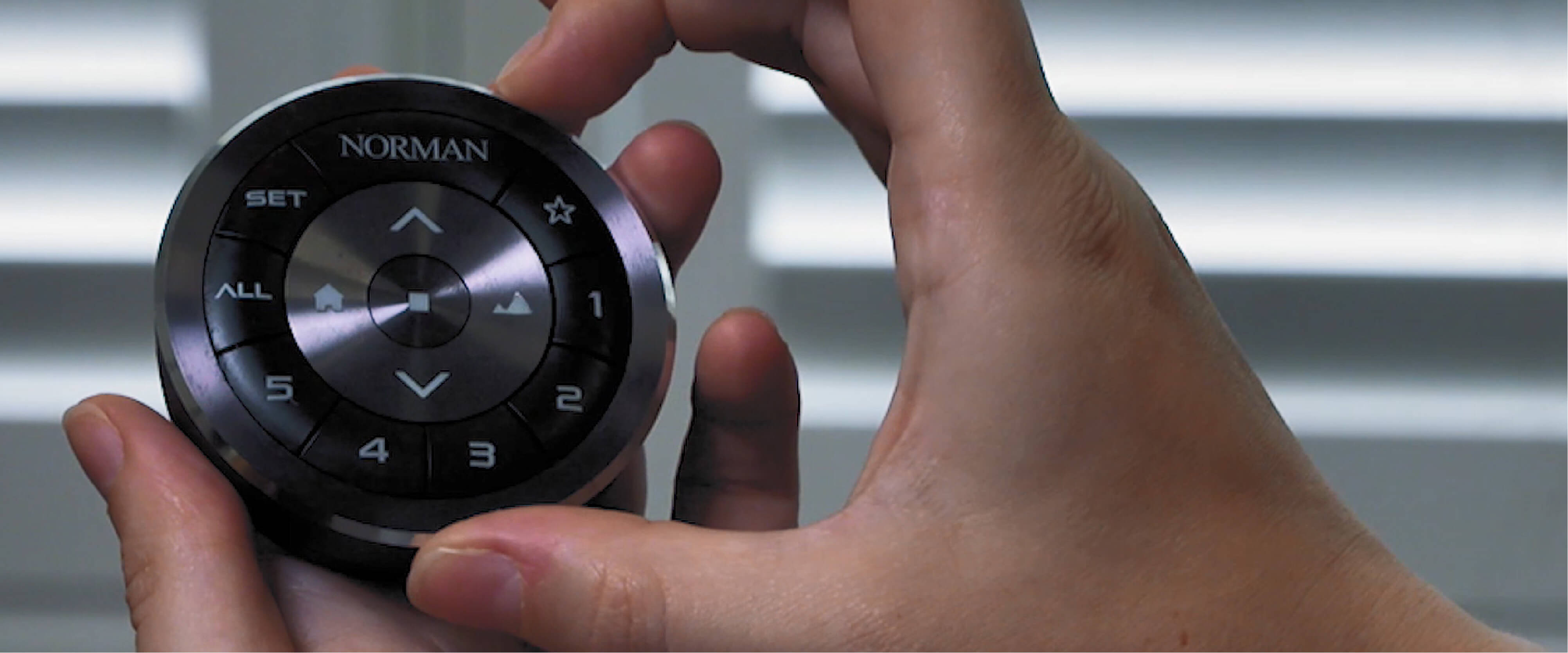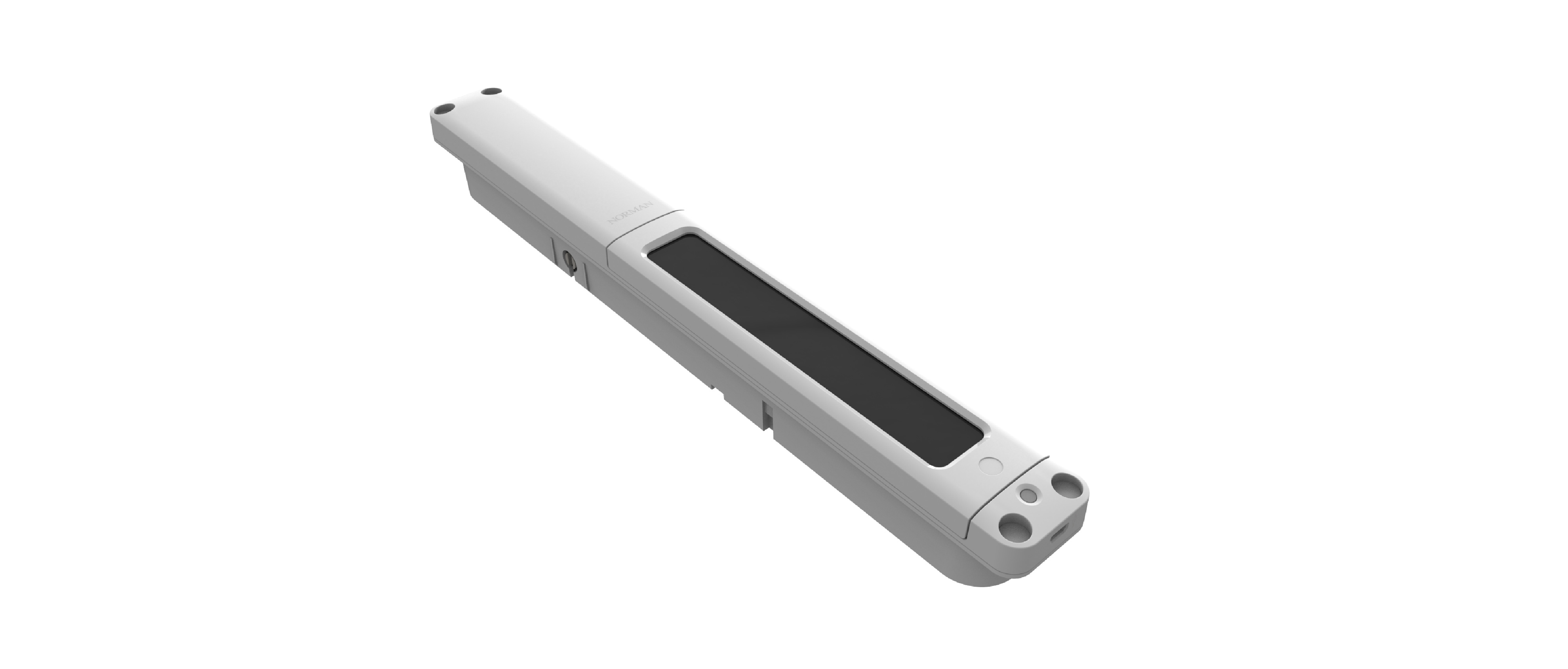If you’ve ever considered motorised shutters here is everything you need to know about how they work. How do they work? Motorised shutters are exactly the same as regular shutters except they have a battery-powered motor in the back of the frame which is recharged by a solar panel. The motor is hidden from view… Read More
If you’ve ever considered motorised shutters here is everything you need to know about how they work.

How do they work?
Motorised shutters are exactly the same as regular shutters except they have a battery-powered motor in the back of the frame which is recharged by a solar panel. The motor is hidden from view inside the house but the solar panel strip and its casing can be seen if you are outside looking in.

How are they operated?
The shutters are operated with a handset that allows you to open and close the shutter slats at the press of a button. You can further customise your experience by opening the slats to a certain degree, so if you don’t want them fully open you can set your prefered preset. This feature means that each time you want to open the slats you can select that preset and return them to your favourite setting. A wireless hub can also be connected to the shutters so that they can be opened and closed via an app so you don’t need to be at home to operate the shutters.

How long does the battery last?
The lifespan of the battery is dependent on where the window is facing and how often the motor is used. South-facing windows will get more sunlight so the battery will be charged through solar power more often, whereas north-facing windows that receive the least amount of sunlight will need to be recharged sooner. Motorised shutters are a fairly new technology so there aren’t many studies to evidence how long the batteries run but from our experience, we say between 6-12 months before they need recharging and an average charge is about 8 hours. As motorisation becomes more mainstream we expect to see more data on the lifespan of the batteries.

What are the benefits?
- Motorisation offers many benefits, the most obvious being how easy it makes life. Instead of going round and manually opening all the shutters, some of which may be in hard to reach places, you can simply press a button and the job is done.
- This kind of smart home technology allows you to operate your shutters from anywhere so if you are away or on holiday you can open and close the shutters as if you were home which is great for security and peace of mind.
- The clever handset also means that you can set your favourite presets for different times of day to create the indoor experience you want. For example, you can set the shutters to open gradually in the morning to ease you awake and in the evening you can set them to close to the degree of privacy you require.
- Another benefit of motorised shutters is that the battery is completely rechargeable via the solar panel so there’s no need to change batteries or wonder when your shutters will run out of power.
As energy prices go up it’s hard not to feel conscious about how much energy you could be wasting. This article answers the question: how much do shutters reduce heat loss? On average 10% of household heat is lost through windows. Combine that with the average heat loss from curtains or blinds which is 15-17%… Read More
What’s the difference between shutters and blinds? The main and most obvious difference is structure. Shutters are fixed to the entire window to create a complete covering whereas blinds are fixed to the top of the window providing a partial covering. The difference in structure also affects the way light enters the room which creates a… Read More
Here’s a short guide on how to make the most of shutters to suit the style of your home. Shutters offer a great way to blend modern and traditional design and add a touch of quintessential style to your space. To make the most of shutters we recommend installing them in rooms where you want… Read More
If you are considering shutters in your home but aren’t sure which type to choose here’s a rundown of the different types of shutters that are available, how they work and where they are best suited. Cafe Style Shutters A popular choice for ground-level windows and townhouses. This style of shutter covers the lower half… Read More
A hard wearing alternative to cheaper vinyl shutters, the Java range is suitable for bathrooms, kitchens, wet rooms or areas prone to condensation issues.
